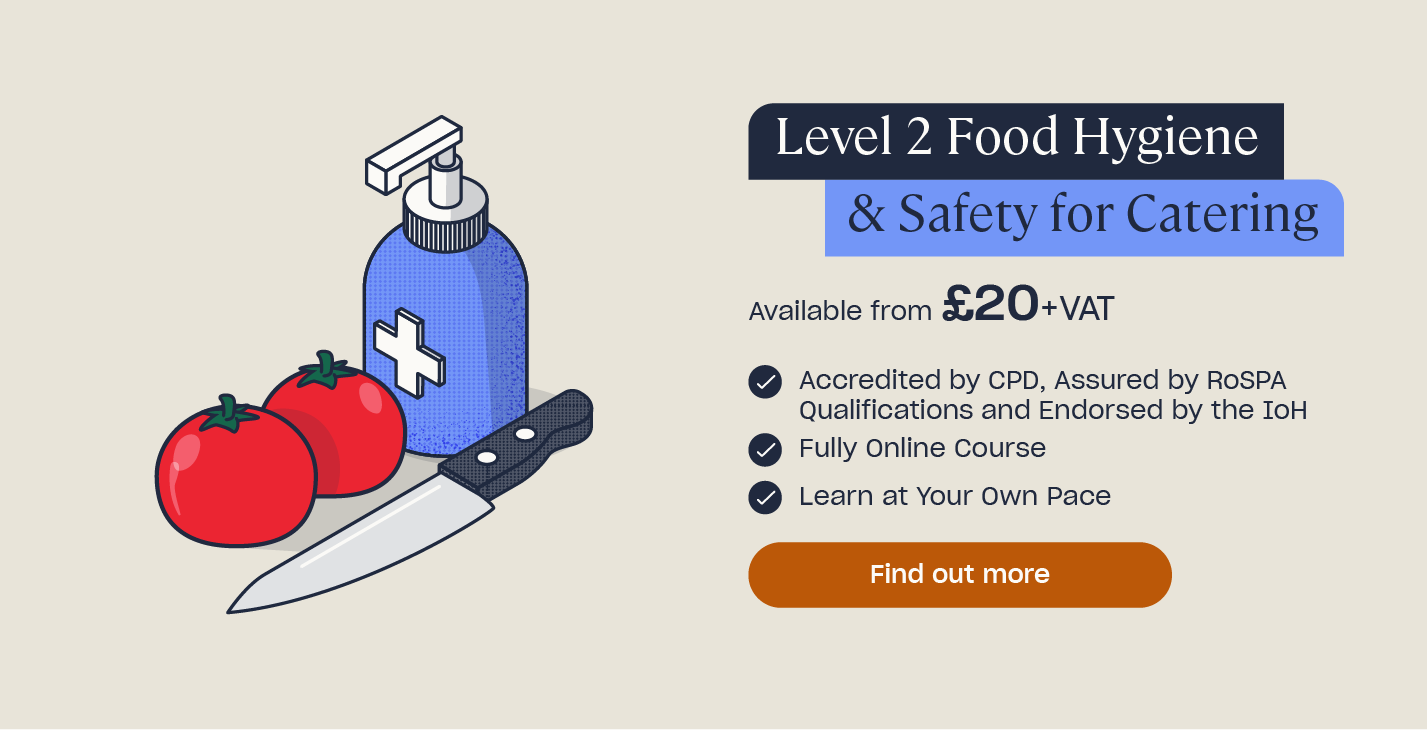What is Sous Vide Cooking & How Does it Work?
Sous vide is a method of cooking that involves vacuum packing food and gently cooking it in temperature controlled water. Think of it like a relaxing hot tub for your dinner!
Historically, sous vide has been seen as a highly technical and inaccessible method of cooking, reserved for top chefs and food scientists alike. However, the emergence of sous vide kits (and ones that won’t break the bank) becoming readily available on the market, lends the technique to a whole new demographic – the humble home cook.
What is Sous Vide Cooking?
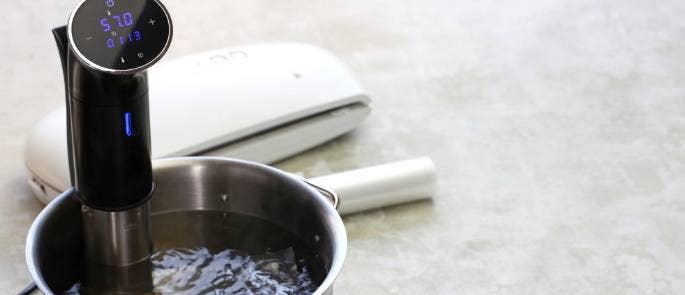
Sous vide, translating literally to ‘under vacuum’ refers to the process of vacuum packing the food you intend to cook. Once this is done, the bag is submerged into heated water, where the cooking is gradual and easily controlled.
It differs from traditional cooking practices, such as pan frying or oven baking, because the food does not come into contact with a heated metal surface. Instead it utilizes precise temperature control – because the water is set and then kept at the same temperature for the entire cook time, the food will not rise above the temperature of the water.
The result of this cook method is consistency, which is why it is so popular amongst chefs in professional kitchens. Imagine a steak cooked to a perfect medium-rare from edge to edge, or a juicy chicken breast that hasn’t dried out after cooking in an oven for half an hour. There are a multitude of other examples, all bound to make a busy dinner shift that bit easier. The possibilities of sous vide are – dare I say – endless?
Why Should I Cook Sous Vide?
The bold claim that the possibilities of sous vide are endless, might seem to be exactly that – a bold claim. However it really is a versatile method of cooking that works for almost anything. Whilst it is commonly and most frequently used to cook proteins such as steaks, chicken breasts and fish, this is certainly not the limit.
Sous vide can also be used to cook:
- Tougher cuts of meat that similarly require low and slow cooking in an oven.
- Eggs, yes you read that right, eggs. They cook well and very precisely using sous vide. Whether you like a hard boiled egg, jammy soft centres or a just-set white with a runny yolk, sous vide has you covered!
- Many vegetables such as carrots, potatoes and asparagus work very well.
- The notoriously challenging process of tempering chocolate can be made easier by using sous vide.
- You can even go as far to begin making yoghurt and custards!
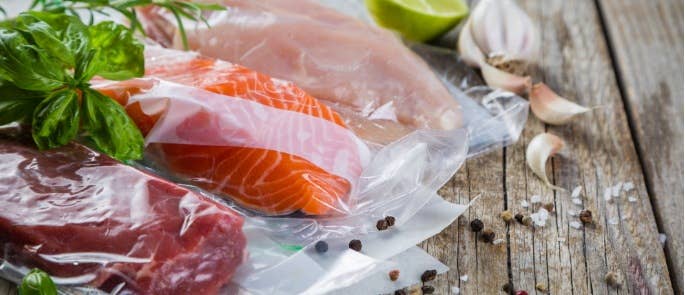
As well as being able to cook a wide array of foods, sous vide offers many other benefits, such as:
- Consistency, you are guaranteed the same results time and time again because of that precise temperature control.
- Convenience – especially for chefs working a busy service.
- Sous vide allows for evenly cooked food such as a medium rare steak from edge to edge, as opposed to the overdone, seared edges you often see when pan frying a steak.
- Studies show a higher reservation of nutrients, as vitamins and minerals that are water soluble do not get lost in the water, instead they remain within the vacuum sealed food.
- Low contamination risk – sous vide cuts the risk of contamination drastically by preventing dangerous, unhygienic handling of food. You can check out our article on the different types of contamination here.
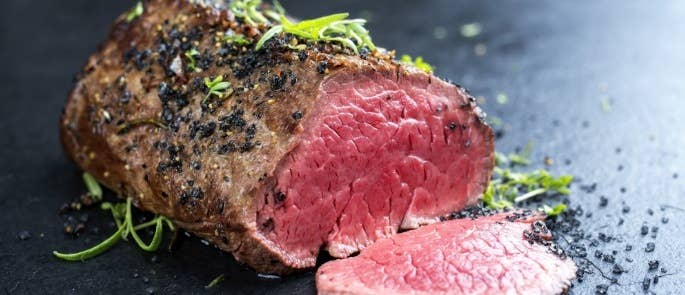
Vacuum Packaging for Food
Don’t let the translation of ‘under vacuum’ fool you, to sous vide you don’t actually need a specialist or pricey vacuum sealer. A decent quality food grade zip lock bag will work just as well! If using a zip lock bag, once you are ready to seal it leave one finger in the opening of the bag and slowly submerge it into a large pot of cold water. As you slowly lower it down, the air will push up and out of the bag and you will be left with a pretty good DIY vacuum seal! Just be sure to check the zip lock is secure. This is not to say a vacuum sealer will put you at a disadvantage, if you have one lying around then what better time to dust it off?
The importance of vacuum sealing comes in many forms.
- If not vacuum sealed correctly, there will be air in the bag causing it to float. This is a big no-no with sous vide, as the bag must be fully submerged to ensure even cooking.
- Sous vide prevents evaporation from the food so it doesn’t dry out.
- Research has shown that sous vide allows for the highest retention of vitamins compared to steaming or boiling. It is also the most efficient process to transfer energy from the water to the food.
It is important to note that there are safety measures to take when vacuum sealing food. It is essential that when vacuum packing chilled foods you have appropriate controls in place to minimise the risk of producing harmful levels of toxin. Under certain circumstances, a bacterium called Clostridium Botulinum (C. botulinum) may grow in the absence of oxygen. This bacterium is able to grow and produce a harmful toxin at temperatures of 3 °C and above.
Sous vide cooking is most commonly cooked at or above 60 °C to reduce the risk of harmful bacteria growth. But remember, it isn’t temperature alone – the length of time that food is cooked for also plays an important role in safely cooking food. To learn more about this you can download our free temperature danger zone chart here.
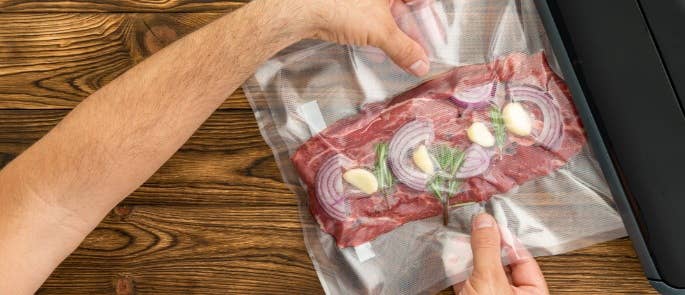
What Do I Need for Sous Vide Cooking?
There is quite a lot of debate as to whether you really need special sous vide equipment. Tools like immersion circulators and sous vide precision cookers do make the process a little easier and more reliable, but they are not an absolute requirement.
If you are using specialised sous vide kit then you will need:
- The sous vide cooker itself.
- Food grade zip lock or vacuum seal bags. You can read why using food safe packaging and materials is important here.
- A large container or pot for the water bath.
If you do not have access to a sous vide cooker, fret no more. Sous vide results are also achievable by simply using a digital thermometer clamped to a pot on your hob. The disadvantage however, is that you will lose heat by evaporation and through the sides of the pot, so invariably the temperature will fluctuate. This just means you will have to keep an eye on the thermometer, adjusting the burner up and down as necessary to keep the temperature within a degree or two.
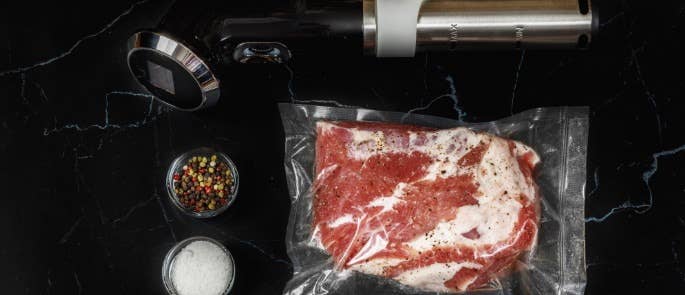
How Does Sous Vide Work?
Sous vide isn’t as confusing as you might think, in reality it can be as simple or as complex as you make it. Let’s say you are cooking a piece of meat like a steak, the steps are as follows:
- Season your steak with salt and pepper as required, just as you would with any other cooking method.
- Bag up the steak along with any aromatics, herbs or marinates in either a good quality food grade zip lock bag or a vacuum packing bag (you will need a vacuum sealer for the latter).
- Seal your plastic bag using a vacuum packer or the DIY water submersion method outlined above.
- Sous vide the steak using either your sous vide kit or a thermometer, your pan of water and your hob.
Additionally, and especially for foods such as a steak, you may want to give it a quick sear in a ripping hot pan after the sous vide. This will give the food a pleasing, aesthetic crust, but it is not essential for all sous vide cooking.
Furthermore, cook time and temperature tend to vary depending on what you are cooking. For example different cuts of meat, or even the same cuts but of different thickness, will require different temperatures and cook times to reach the desired ‘doneness’.
Understandably, you may have never given a second thought to sous vide, seeing it as something exclusive to a very niche level of cooks. Hopefully this article acts as a firm reminder that it isn’t anything to shy away from.
Whether you have all the kit or simply just a thermometer and a pot of water, it really is a brilliant method of cooking that is becoming more and more utilised by cooks of all abilities. It allows for efficient and precise cooking in commercial kitchens, but also allows home cooks to achieve restaurant style steaks, chicken and much more from home. Perhaps the claim that the possibilities of sous vide are endless, isn’t such a bold claim after all.
Further Resources:
- Level 2 Food Hygiene and Safety for Catering
- Can I Freeze This & For How Long?
- How to Improve Sustainability in Restaurants


